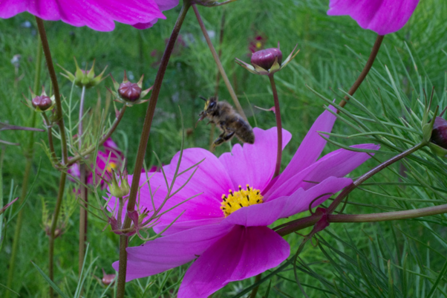Harvest time is the most eventful of the seasons. The glut of produce and the weather changing so suddenly, both mark the end of summer, and result in new garden tasks based around preserving. The jobs that come with this transition – the weeding, mulching, tidying, and giving away all bear the mark of hunkering down for winter. I have no routine approach for using up the endless supply of courgettes, tomatoes, potatoes, cabbages, so one method or another is always being used, if not planned. Inventive recipes may be broadcast online showing real expertise and originality, but the way I use-up my vegetables is usually quite simple. To mix things up, every now and then I try something new, and my latest experiment is to try kimchi – a Korean recipe for fermenting cabbage.
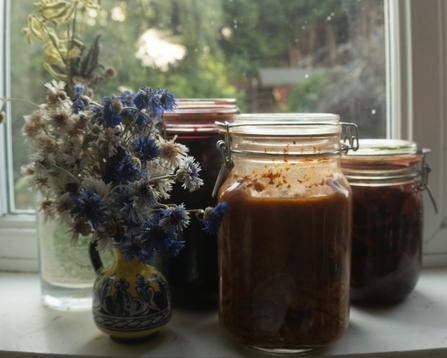
The process of making kimchi uses the organisms of cabbages, chilies, and other raw vegetables, to preserve add flavour. Practically speaking, as a fermentation newbie, it can be moderately expensive building up a collection of jars. It is also by no means a simple process and requires very careful preparation and strict hygiene. What appealed to me about fermenting vegetables was saving waste and saving freezer space. I turned to this method in addition to pickling and – my most favourite and reliable method – freezing. Regardless of methods, however, the upshot of preserving vegetables is that I always have something homegrown to eat. It makes me feel a little bit self-sufficient, and reminds me of hot summer months, harvest time, and days spent in the allotment.
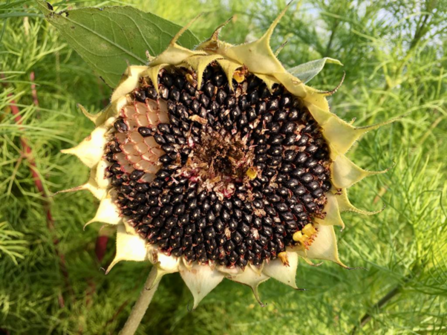
In the meantime, while all the above is happening in my kitchen, based on the produce from my plot, plants are slowly winding down and morphing into different shapes. In subdued and bulked-up forms these remaining flowers and vegetables form seed heads, which can be collected and sown next year. Some are also valued amongst birds, many of which have been enjoying my sunflower seed heads.
The amazing complexity of a nigella seed heads can be left in the plot to add interest, but as mine are a little small, these seed heads are going to be put in a vase and used to decorate my kitchen – a very basic but pretty way to jolly up the house over winter. Another thing that I do, alongside collecting seed for sowing next year, is saving seeds to use in baking. Nigella seeds are also particularly good on top of naan bread.
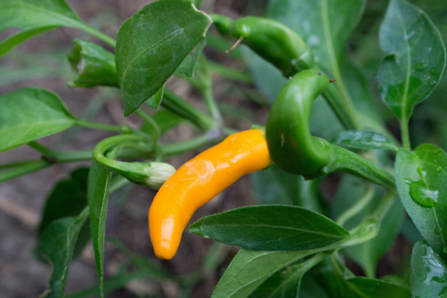
But nowadays, people are less interested in sowing, more interested in collecting and saving, taking stock, and building up a decent compost heap by adding foliage, kitchen waste, and the inevitable giant marrow or two. These days are certainly rich in courgettes, many of which are going to be turned into a soup with fresh ginger and turmeric – but the inevitable few will end up huge and unusable. This is just a fact of my allotment life. Courgettes grow into enormous marrows so quickly at this time of year – blink and you’ll miss it! So you had better keep your eyes on the job!
In such a time, the hungry gap – the leanest time of year between April, May, and early June – seems very far away. I am going to prepare for this empty season by sowing a few cabbage and chard seeds, broad beans and spring onion seeds. Right now, there is a lot to harvest, but those spring cabbages might give me some vegetable-based happiness in 8 months! Either way though, we have a reserve of jobs at this time of year – keeping us very busy indeed.
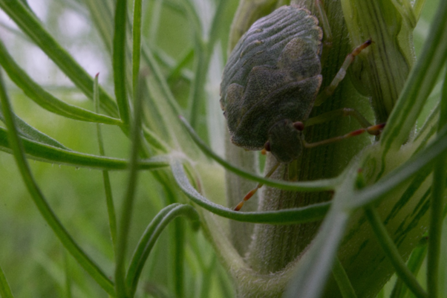
The antidote to this busy time is to be found in embracing a certain number of weeds and wilderness. This may seem an unruly approach to gardening, and I do not wish to let my plot spread any weeds beyond the small spaces where they are left to grow. But it is useful to have a few stinging nettles to house overwintering insects and encourage ladybirds back to your plot, come Spring. Insect-eating birds, small mammals and moths all gathered around my nettles this year, making the plot more wildlife centred. A habitat for several creatures – the good, the bad, and the green stink bug!
I think gardening should always be about nature. There shouldn’t be the assumption that you know ahead of time exactly what is going to grow – and where. When you start winding up come August, you’ll begin to realise just how abundant your plots been – or hasn’t been – based on all the variables that the season has thrown at you. And as you plan for next year, your ideas will be informed based on what went well. It’s a continuing balancing act: on the one hand you work within the constraints of the plot, but on the other hand you notice all the unpredictable things that nature has thrown at you. In gardening there’s always an element of uncertainty, which is why I enjoy it so much!
